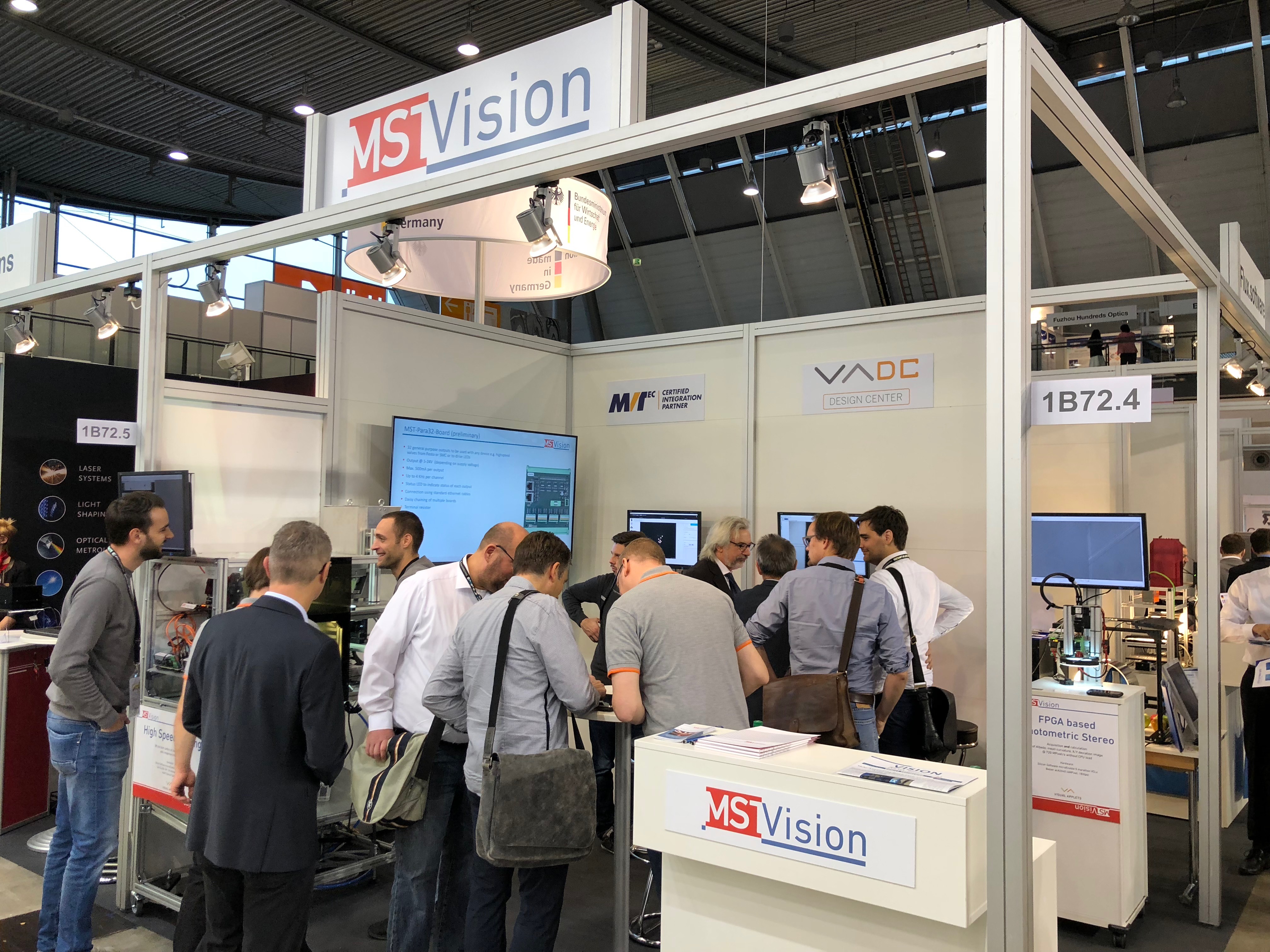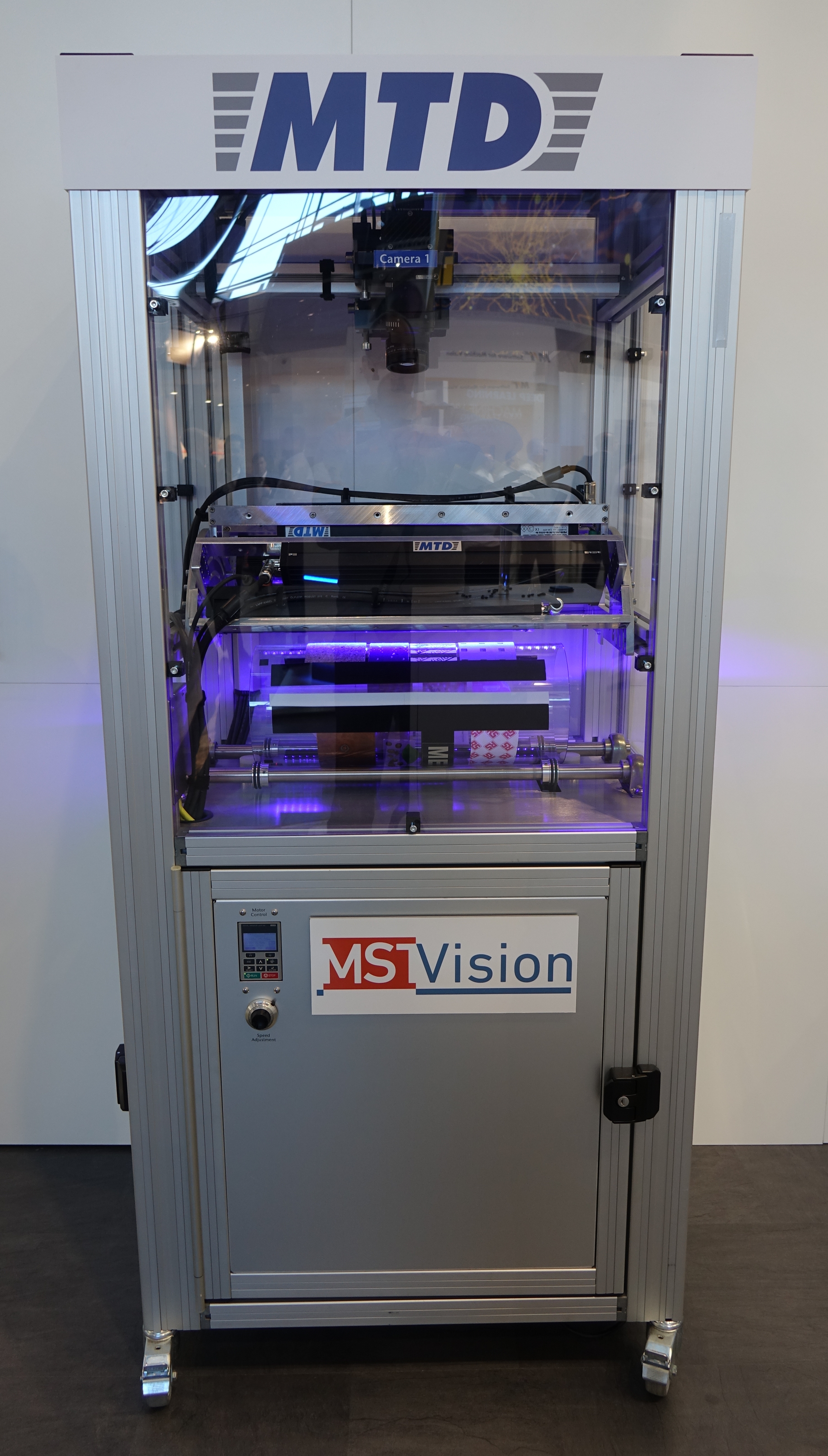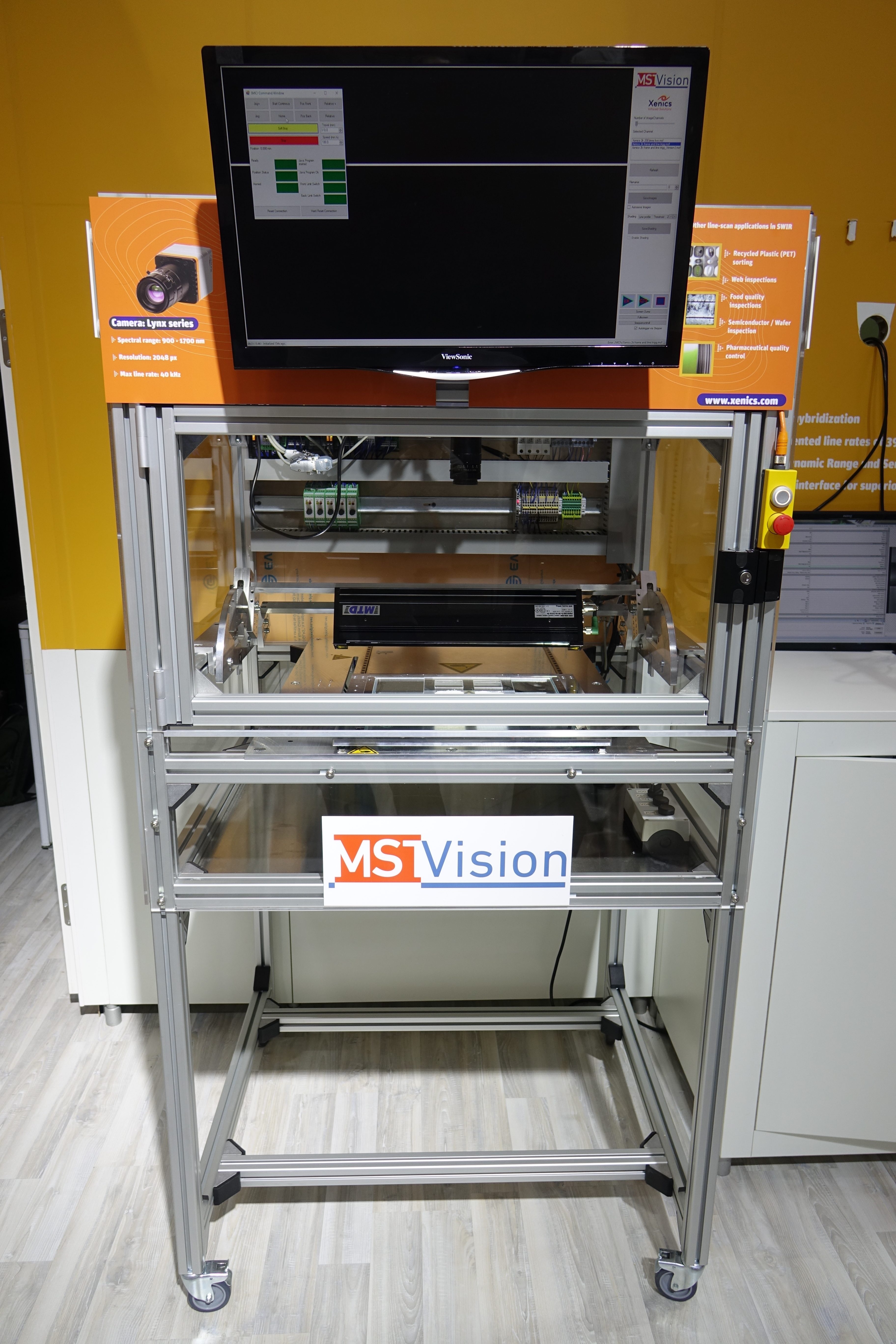


The performance was demonstrated live on the booth. In the test setup black and white balls were sorted with a response time of only one millisecond. Although an 8K line scan camera with a line frequency of 100KHz was used, the demo could be realized on a passively cooled Intel Celeron® processor. According to several customer statements, these performance data were not available until now.
In addition, MSTVision demonstrated its know-how with two further demonstrators in the two most important development tools, Halcon and VisualApplets. Thus it was shown how quickly and easily customer-specific HALCON algorithms can be implemented in cost-effective, freely programmable smart cameras, e.g. the IDS NXT Vegas.
Based on a Baumer LX camera it was shown how easily an FPGA, programmable with VisualApplets, can control 128 digital outputs.
Another highlight was the demonstration of a current student research project. The well-known photometric stereo method was completely implemented in the FPGA of a Silicon Software frame grabber. In this procedure several images are taken under different lighting directions, the image sequence is analyzed in its entirety and the curves and albedo image as well as the X/Y derivative are calculated. Despite the extremely high data rates of 720MByte (4MPixel at 180 frames per second), the processor is only loaded with a few percent.
For the first time, these data rates allow a complete surface inspection of web material. This approach was demonstrated for line scan applications at the MTD booth with a line scan camera and the matching LED line lights.
The simultaneous acquisition of several IR wavelengths (time multiplexing) with IR line scan cameras was demonstrated at the booth of MTD as well as at the booth of Xenics.
